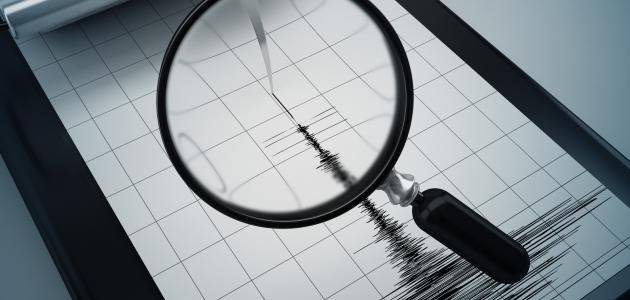
The types of earthquakes occur as a result of several natural factors, which are considered to be the first influence in the shape of the interior and exterior of the earth, and the albumin is divided by the forces that are updated to them as follows: Volcanic Alzlle: Their occurrence is directly linked to volcanic activity, so that molten rock material bursts from the ground to the surface, such as the earthquake in (Indonesia-KARABTA) triggered by a burst of tremors fierce in the sea and formed huge waves that flooded the nearby islands and caused immense havoc, destroying villages, displacing their residents and damaging The largest is on the islands of Java and Sumatra. Tremors arising as a result of volcanic activity are local tremors that are not severe and often do not alter the geological structure of the Earth. Tectonic earthquakes: The surface level of the terrestrial crust, which occurs as a result of cracks and refractions occurring in the depth of 70 km of surface. Zalzzel Belizazin: The reason for being named Pluto is a god of the Greeks, up to the great depths of the Earth in the range of 800 km, such as the earthquake that recorded in East Asia, the cause of this type and the type of tectonic is essentially a move in the Earth's crust, which is near it below. The most important reason for earthquakes is the pressure on the plates, or their collision with each other, which brings us back to the result of a collision pressure, thus considering the pressure from movements within the earth are a major cause of earthquakes, and pressure leads to refraction, budge and formation of inner forces that will cause earthquakes. After the earth was exposed to earthquakes, the scientists studied it as a natural and destructive phenomenon above the surface and a head changer under it, and in to find and differentiate the instruments of the severity of these albumin to study them, they have created two measures to measure these earthquakes: the Richter scale: named after the World (Charles Francis Richter) because he made it, his business mechanism works that measure so that it measures the amount of energy emitted from the epicenter of the earthquake., based on logarithms, with logarithmic degrees from 1 to 9 degrees, so that the difference between each degree is preceded by Ten times, for example: An earthquake with a strength of 8 degrees is 10 times stronger than the 7-degree earthquake, so the degree is an important difference in the measurement of earthquakes. According to the Richter scale, the severity and intensity of the quake is considered to be devastating from the fifth and higher levels and is considered to be an average of three to five degrees. Thus, earthquakes of less than three degrees are simply not destructive and some may not even be felt, depending also on the earthquake-prone region. The other measure was the Italian scientist Giuseppe Markale, measuring the vibration force, and his action is to measure the albumin according to the location of the law that follows the inverse relationship between the site the quake and its strength so that the more we are about the earthquake site, the more vibrations it is, the higher the first degree is a description of an earthquake that may not be felt and the greater the magnitude of the quake. Share article
Authors get paid when people like you upvote their post.
If you enjoyed what you read here, create your account today and start earning FREE STEEM!
If you enjoyed what you read here, create your account today and start earning FREE STEEM!
Please remove the #deutsch tag.
Downvoting a post can decrease pending rewards and make it less visible. Common reasons:
Submit
done
Downvoting a post can decrease pending rewards and make it less visible. Common reasons:
Submit
Thank you very much
Downvoting a post can decrease pending rewards and make it less visible. Common reasons:
Submit